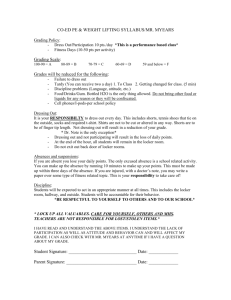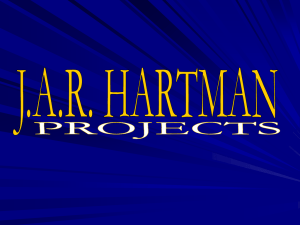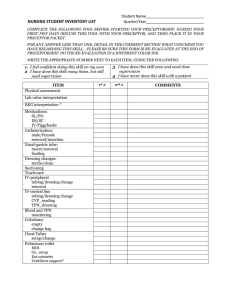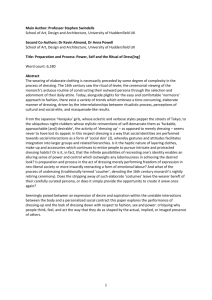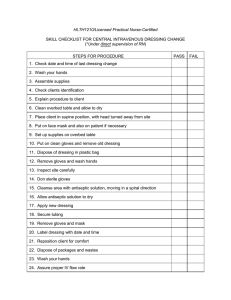Power Dressing & Career Woman: Fashion & Identity
advertisement
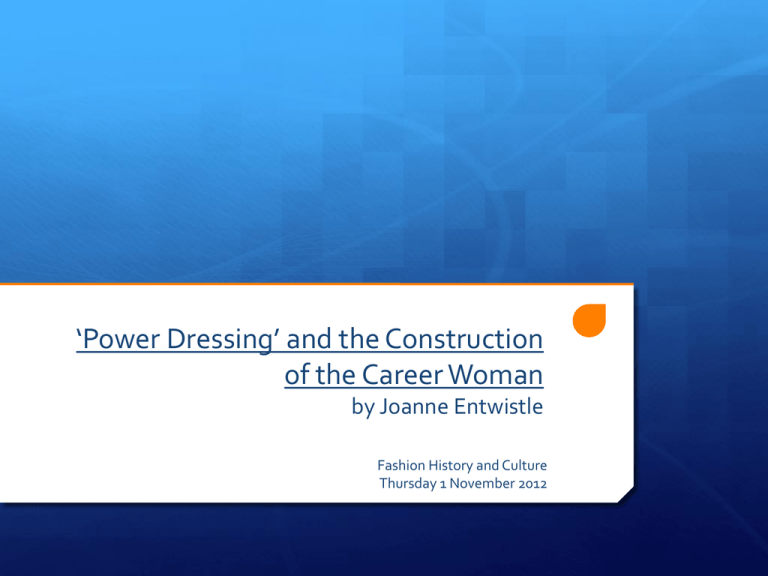
‘Power Dressing’ and the Construction of the Career Woman by Joanne Entwistle Fashion History and Culture Thursday 1 November 2012 What are 'technologies of the self’? In the theory.org.uk quiz, there is a question about Foucault's term 'technologies of the self', which (in the answer) I said 'basically refers to ways in which people put forward, and police, their "selves" in society; and ways in which they are enabled or constrained in their use of different techniques by available discourses'. Jason Mittell from the University of Wisconsin- Madison wrote to me and suggested this: "Technologies of the self are the specific practices by which subjects constitute themselves within and through systems of power, and which often seem to be either 'natural' or imposed from above". And Jennifer Webb of Queensland Art Gallery sent me this: "Technologies of the self are a series of techniques that allow individuals to work on themselves by regulating their bodies, their thoughts and their conduct". Suzanne Bachman suggests: "Technologies of the self are self-conscious moments of behavior, thought and action precipitated by one's simultaneous awareness of their relation to the interior of the exterior and/or the exterior of the interior". Ernst Buchberger from the University of Vienna says: "Technologies of the self' are methods employed by people resulting in how they will be perceived as 'selves' by 'others' and them'selves'". Jessica Matthews of Sarah Lawrence College suggests: "Technologies of the self are the mechanisms employed by individuals and society, for better or worse, which perpetuate the public consumption of and regulation of individuality“. Power Dressing: Joan Crawford in Mildred Pierce and Ingrid Bergman in Hitchcock’s Spellbound ‘Dress for Success’ How does the idea of the “preforming self” help us understand the public career woman? (211) The Managed Heart: Arlie Russell Hochschild What is the future of the Working Girl? Image Consulting and Dressing Manuals: Exaggeration or New Reality? Study List: Other things to consider from the reading. Margret Thatcher implemented “dressing for success” (based on self-help author John T. Molloy’s book Dress for Success), and, as you see in the recent movie about her, Iron Lady, she received image advise from professional political consultants that refined her power-dressing image, making her more electable; and, indeed, making British voters take a woman seriously enough to not only to vote in a different political party, but also elect a woman Prime Minister. The “power dressing” and “dress-for-success” look of the 1970s and 1980s was very different from the secretarial look of the nineteenth century, where fashion historian Valerie Steele notes how ladies’ journals advised women to wear appropriate clothes that were “smart but not provocative.” By “provocative,” you can read either provoking respect for authority (Thatcher, Hillary Clinton) or provoking authority and sensuality (Sarah Palin). Study List: Other things to consider from the reading. The Enterprising Self is a calculating self. The senior female executive regulates her own dress, so does not require management above her to regulate her attire. Molloy’s Dressing-for-Success woman should unite with other like-minded ambitious women. For the dresser-for-success woman, shopping becomes not an act of pleasure so much as a obligatory act of work.
